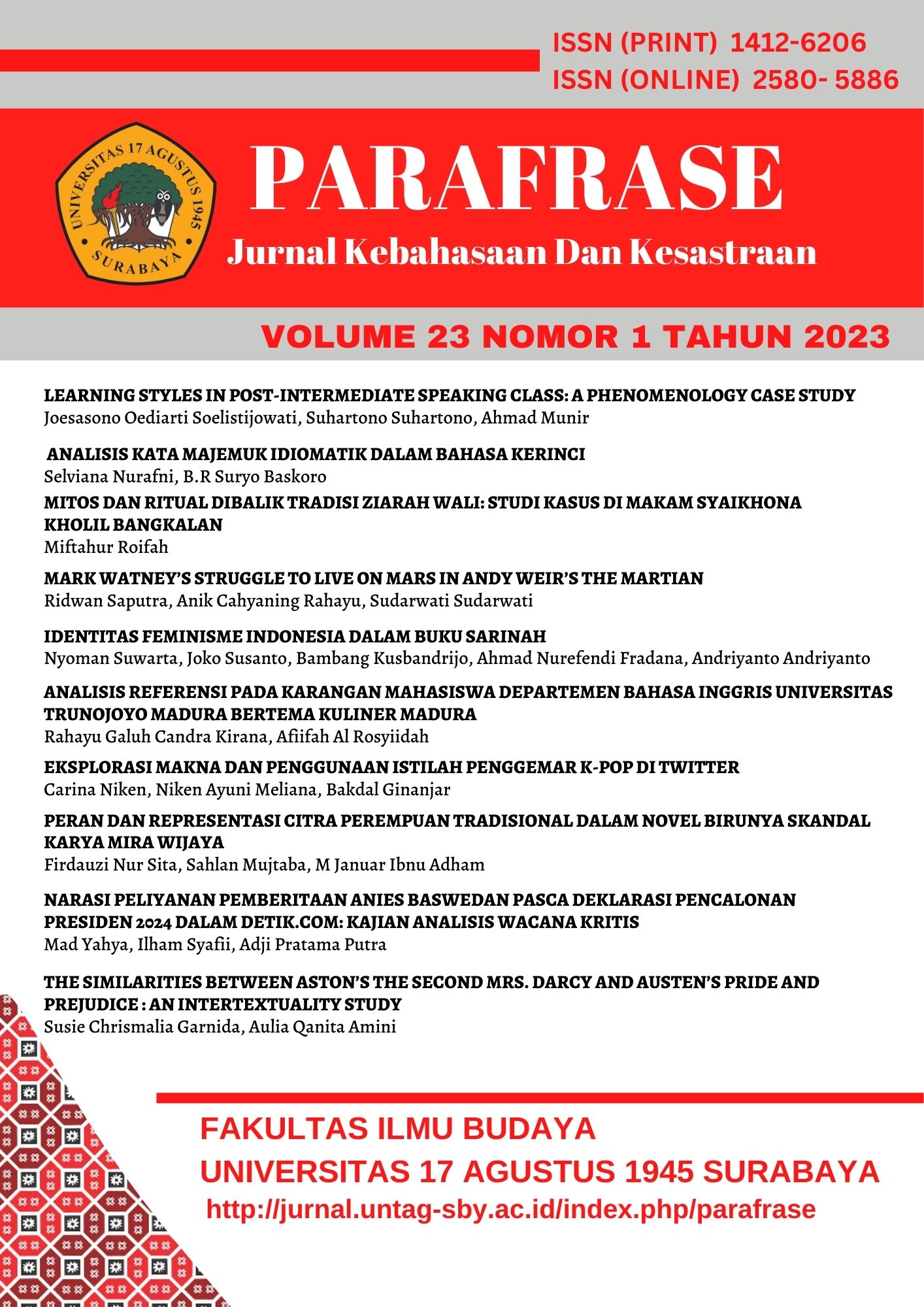ANALISIS KATA MAJEMUK IDIOMATIK DALAM BAHASA KERINCI
DOI:
https://doi.org/10.30996/parafrase.v23i1.7317Keywords:
Bahasa Kerinci, compound word, idiomAbstract
This study discusses idioms in the Kerinci language which aims to see the form of each idiom found, as well as the translation of the meaning contained in each idiom, then find the syntactic structure found. The method used is descriptive analysis with a qualitative approach. The data were collected by interview technique, the researcher listened and recorded the results of direct interviews with native Kerinci speakers, then analyzed the data using Chaer's theory regarding the categorization of idioms based on the closeness of meaning. The results show that in the Kerinci language, there are 2 categories of idiomatic compound words, namely full idioms found in as many as 14 data such as gulou tika and bio donkey, partial idioms found in as many as 31 data, for example, seko imau and behek butt. The syntactic structure found in the data shows that Kerinci idioms are in the form of adjective phrases, verbs, and nouns and are in the form of complete clauses.
Downloads
Downloads
Published
How to Cite
Issue
Section
License
Authors publishing in the Journal will be asked to sign a Copyright Assignment Form. In signing the form, it is assumed that authors have obtained permission to use any copyrighted or previously published material. All authors must read and agree to the conditions outlined in the form, and must sign the form or agree that the corresponding author can sign on their behalf. Articles cannot be published until a signed form has been received.It is a condition of publication that authors assign copyright or license the publication rights in their articles, including abstracts, to email jurnalparafrase@untag-sby.ac.id. . This enables us to ensure full copyright protection and to disseminate the article, and of course the Journal to the widest possible readership in print and electronic formats as appropriate.



















